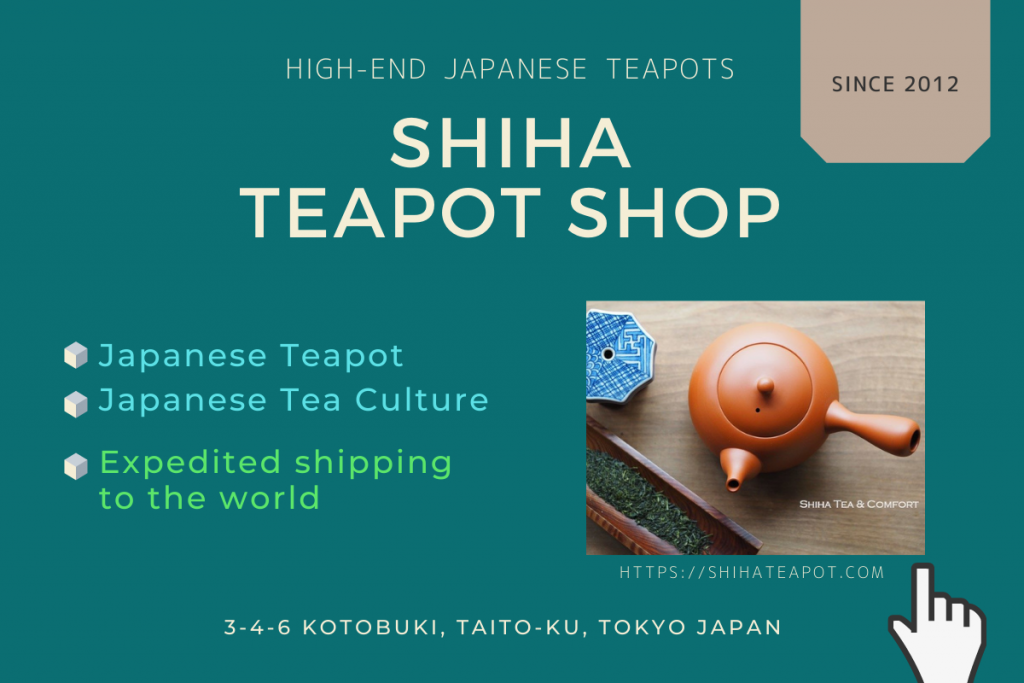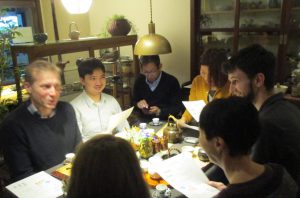“MOGAKE” Kyusu Teapot Story. Beauty of Seaweed Lines, on Pottery. Hakusan Katayama, Tokoname 常滑焼 藻掛け急須 海藻紋
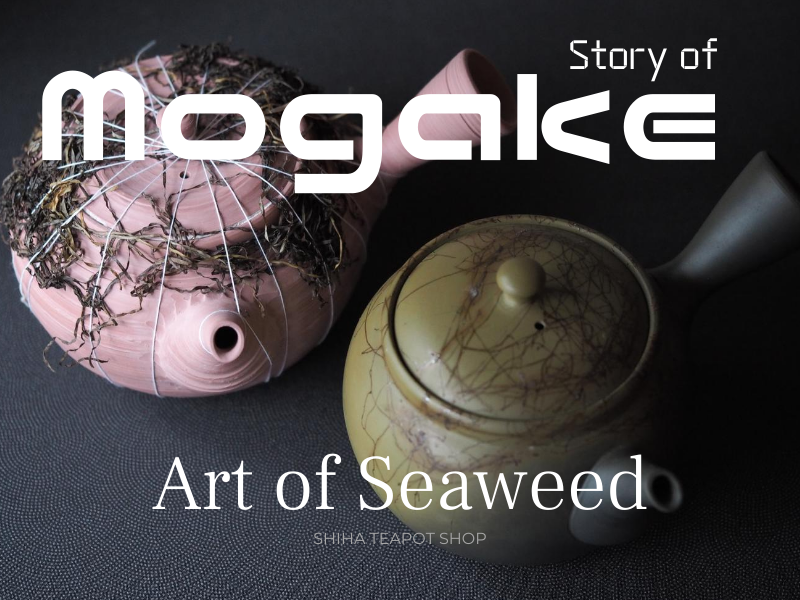
Contents 目次
Mogake – Hakusan’s Representative Works
Hakusan 3rd(白山) is a teapot artist in Tokoname, Aichi, Japan, born in 1949. Mogake (Seaweed) teapots are his representative works.
He uses green clay and white clay often.
Seaweed on green and white teapots are beautiful and bring you to nature in mind.
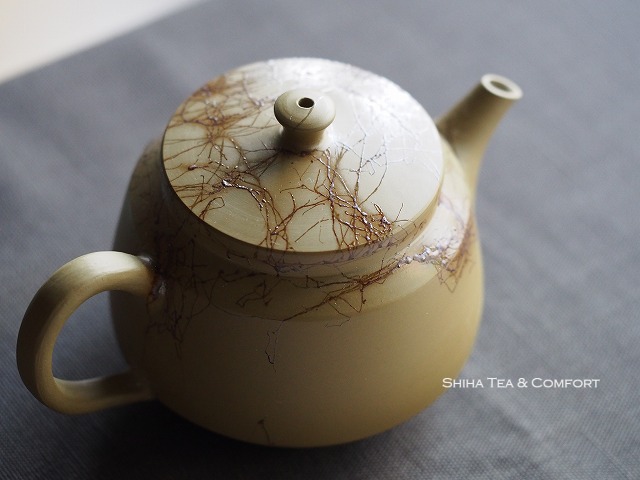
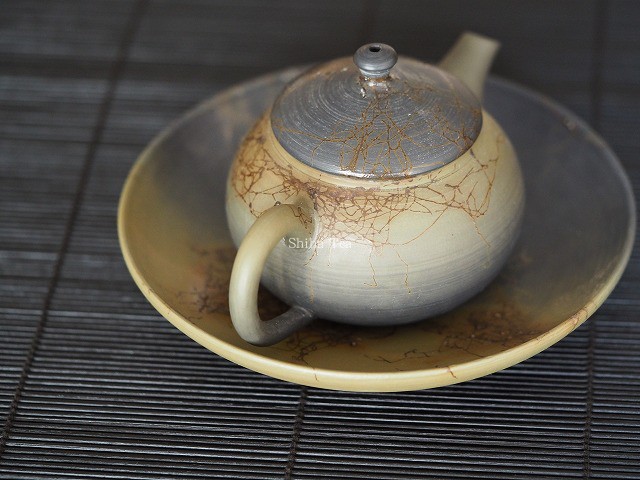
Continuous Legacies
He learned technique of teapot work from his father (Hakusan of the second).
His grandfather was a teapot artist ( Hakusan of the first) and start using the name of Hakusan
The third Hakusan said that it seems that father of the grandfather was also potter.
In that case, Hakusan the first is Hakusan the second, but he is not sure …
(This is what I heard when I visited his studio)
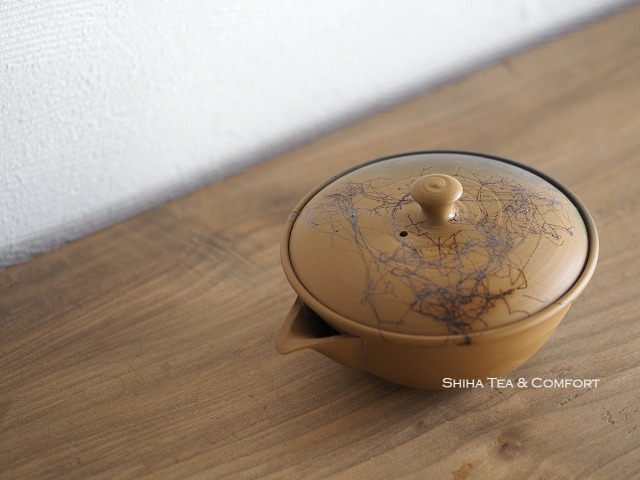
He continues that his grandfather used to make teapots in Yokkaichi city in Mie prefecture, that is another famous teapot production area in Japan. (Teapots made in Yokkaichi are called Banko Teapot).

The grandfather moved to Tokoname for some reasons and made his studio.
He said that in 1930’s – 1940’s there were many craftsman moving from one area to another for improving their skill and technique and for better job.
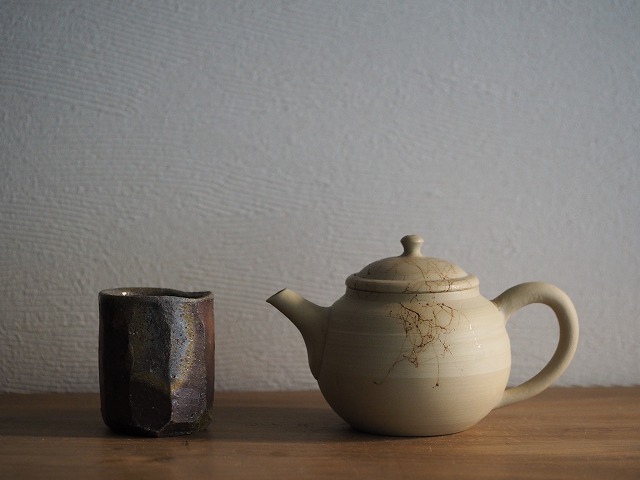
Mogake -Tokoname city is facing to Ocean. How to Obtain Seaweed
Tokoname city is facing to the ocean. Seaweed teapots are unique and only seen in Tokoname area.
Artists go to sea and pick seaweed by themselves.
Spring seaweed is soft and thin and makes beautiful pattern. So that Tokoname artists go pick seaweed on a spring day when tide is low.
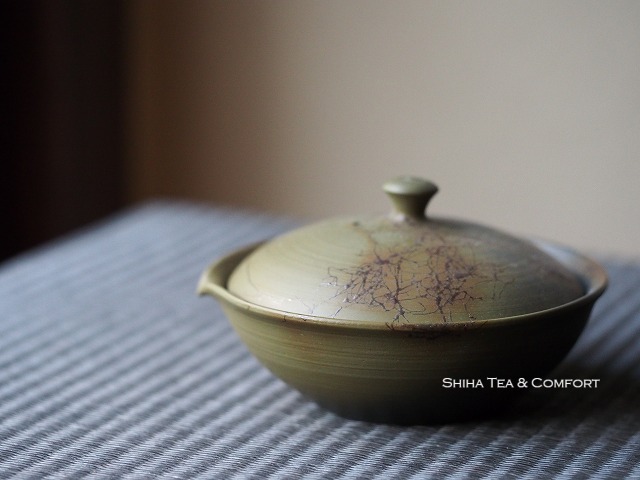
Wash seaweed repeatedly and thoroughly and dry them… It is actually hard work. For more details, please read the article below.

How Hakusan Gets Seaweed? Father’s legacy.
For Hakusan’s case, his father picked tremendous amount of seaweed at around 75 years ago and he still kept them in hand. Hakusan uses them evern now.
What you see on Hakusan’s teapot is 75 year ago’s seaweed! Combination of old & new in a teapot is very nice.
Hakusan says that he can concentrate on making teapot (clay work) because he doesn’t need to do seaweed preparation.
History of Mogake Teapot
In history, seaweed teapot were already seen in mid 1800’s (Edo period). Mogake (seaweed teapot) is a traditional technique.
Mogake Techniques – How To Make
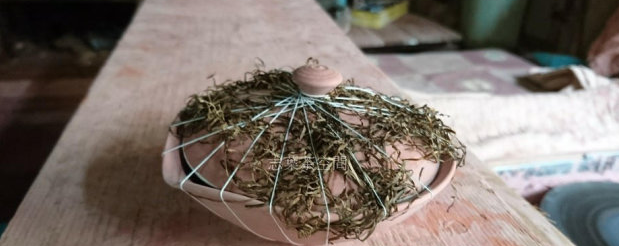
Look at the picture, that is right before going to kiln. Dried seaweed is bound on a teapot with strings.
Components of seaweed and clay make reaction in firing process and make red/brown pattern on teapot. It is so beautiful and so nature!
What is the Most Difficult for Mogake?
Hakusan said that temperature of firing must be higher than usual to melt seaweed and make color patter on teapots . It is close to 1200℃.
Way of the binding with strings is a technique.
Seaweed should stay in position until reaching to right temperature. This is also one of difficult parts.
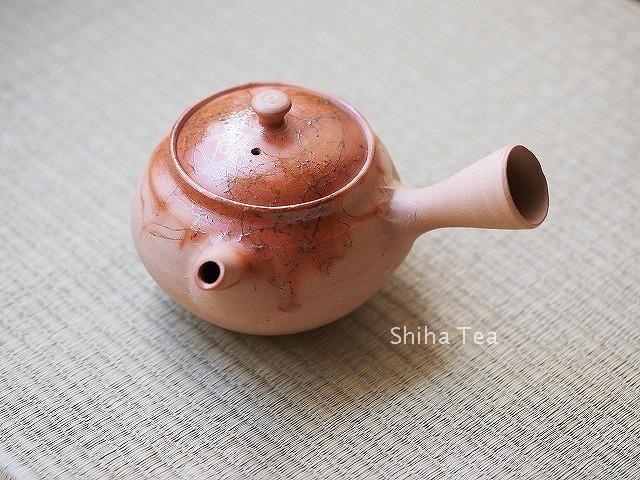
Taste Mogake & Clay, Feel the Artist
Hakusan studio is run by only himself. Hakusan does all the work by himself, such as purify clay, design, create teapot, firing etc..

Teapots of Hakusan are purely Hakusan’s work! If you have his teapot, fully enjoy the clay, the shape, the color, the pattern.
It is very Hakusan.
He is always very calm and relaxed person. His personality is close to nature – make me feel so simple, fresh and natural when I talk to him.
This is introduction of Hakusan and his teapot who create simple, natural and beautiful teapots.

